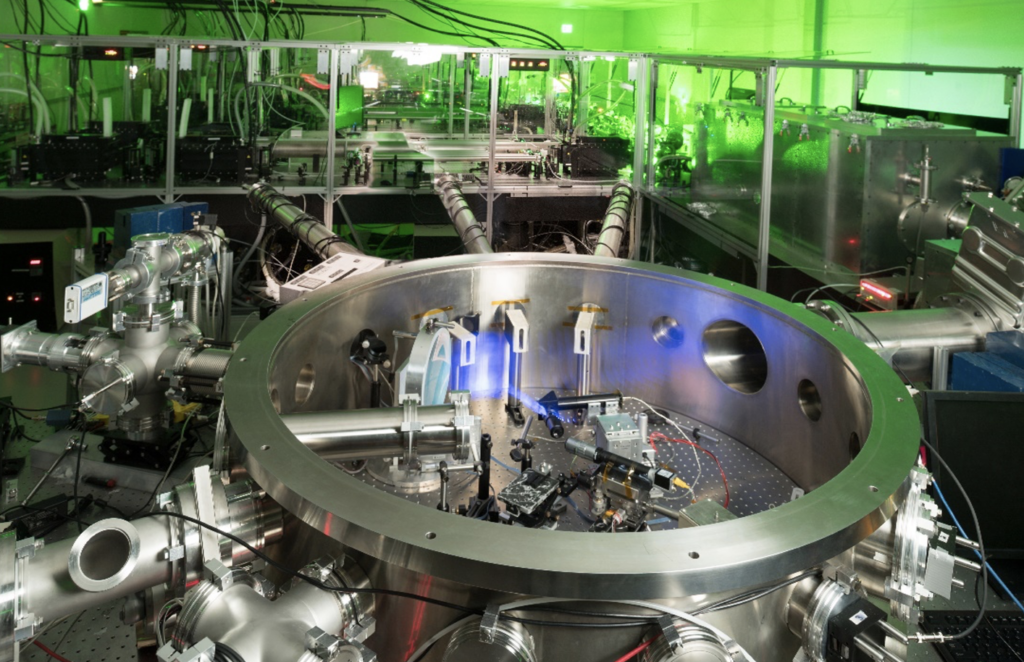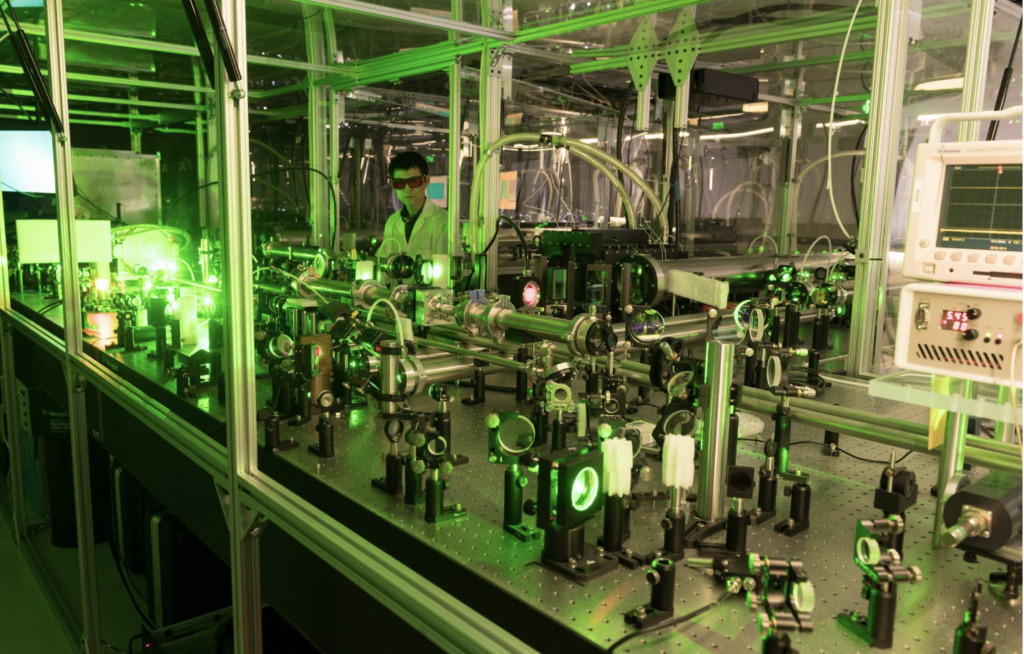
The target chamber for ultrahigh intensity laser experiments at Colorado State University. CSU’s partnership with Marvel Fusion will support construction of a next-generation, high-power laser and fusion research facility on the CSU Foothills Campus. (Photo courtesy CSU Photography)
Fort Collins is poised to become home to one of the most powerful laser facilities in the world and an international epicenter for research into inertial fusion energy, lasers and photonics, and high energy density physics under an emerging partnership between Colorado State University and Marvel Fusion.
The $150 million venture creates a public-private partnership to support construction of a next-generation, high-power laser and fusion research facility on the CSU Foothills Campus. The partnership, pending finalization of the financial details by the CSU System Board of Governors, would establish Fort Collins as a nexus for laser fusion research and deliver significant positive impacts to Colorado.
“CSU has been at the forefront of laser research for many years, and this new partnership would cement the university as an international leader in an area of laser science that has the potential to deliver profound benefits to our planet for generations,” CSU President Amy Parsons said. “The project aims to open up new avenues of research and exploration for students and faculty, and drive meaningful, long-term benefits to Fort Collins and the state.”
Marvel Fusion is a private company working to commercialize fusion energy through its laser technology. When completed, this state-of-the-art facility is envisioned to serve as a platform to advance the company’s fusion approach. Advancing laser fusion and its potential as a new source of power is critical because of its ability to dramatically reduce the carbon footprint of how energy is supplied globally.
“This public-private partnership sets the global standard for laser-based fusion research, propelling the development of a safe, clean, and reliable energy source. It is an incredible step forward for Marvel Fusion and a testament to our success and vision,” said Moritz von der Linden, CEO of Marvel Fusion. “Working with the world-class team at CSU over the past two years has been invaluably productive. We are immensely grateful for the trust and support of CSU, the State of Colorado, and the U.S. Department of Energy’s ongoing support through the LaserNetUS program.”

CSU has developed one of the most powerful lasers in the world, called ALEPH. (Image courtesy CSU Photography)
CSU is a member of LaserNetUS, a program funded by the DOE’s Office of Fusion Energy Sciences. LaserNetUS works to ensure North America has a strong network of capable laser research facilities and provides access for research groups including U.S. National Laboratories, universities, and private industry. The DOE recently announced $12.5M in additional funding to CSU for laser upgrade prototyping and increased LaserNetUS support, helping create and maintain the caliber of equipment and expertise to make projects like the new facility possible.
Targeted for completion in 2026, the project is planned to feature at least three laser systems, each with a multi-petawatt peak power and an ultra-fast repetition rate of ten flashes per second. Such a combination of lasers would make the facility unique in the world. The flagship facility will be designed to accommodate expansion and additional lasers in the future. The initially selected site for the new laser facility is near CSU’s existing Advanced Beam Laboratory, built in 2013, on the CSU Foothills Campus.
CSU’s capacity to conduct high-power laser research and its applications would vastly expand under the partnership, including opportunities in clean fusion energy, microelectronics, optics and photonics, materials science, medical imaging, and high energy density science. This unique facility would motivate and enable further collaboration with industry, other universities, and U.S. National Laboratories.
Such a facility would provide CSU’s undergraduate and graduate students with unique opportunities to conduct research with some of the most advanced lasers in the world; open the door for new classes, certificates and degree programs at CSU; contribute to the training of the workforce needed for the development of fusion energy; and help attract the best faculty, researchers and graduate and undergraduate students to study laser fusion and adjacent fields.
“This is an exciting opportunity for laser-based science, a dream facility for discovery and advanced technology development with great potential for societal impact,” said Jorge Rocca, director of CSU’s Laboratory for Advanced Lasers and Extreme Photonics and a University Distinguished Professor in the Departments of Electrical and Computer Engineering and Physics at CSU.